
Powązki Cemetery, also known as Stare Powązki, is a historic necropolis located in Wola district, in the western part of Warsaw, Poland. It is the most famous cemetery in the city and one of the oldest, having been established in 1790. It is the burial place of many illustrious individuals from Polish history. Some are interred along the "Avenue of the Distinguished" – Aleja Zasłużonych, created in 1925. It is estimated that over 1 million people are buried at Powązki.

Lychakiv Cemetery, officially State History and Culture Museum-Preserve "Lychakiv Cemetery", is a historic cemetery in Lviv, Ukraine.

Lucyna von Bachman Ćwierczakiewiczowa was a Polish journalist and author of Polish cookery books.
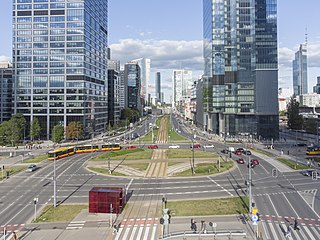
Wola is a district in western Warsaw, Poland. An industrial area with traditions reaching back to the early 19th century, it underwent a transformation into a major financial district, featuring various landmarks and some of the tallest office buildings in the city.

The Warsaw Jewish Cemetery is one of the largest Jewish cemeteries in Europe and in the world. Located on Warsaw's Okopowa Street and abutting the Christian Powązki Cemetery, the Jewish necropolis was established in 1806 and occupies 33 hectares of land. The cemetery contains over 250,000 marked graves, as well as mass graves of victims of the Warsaw Ghetto. Although the cemetery was closed down during World War II, after the war it was reopened and a small portion of it remains active, serving Warsaw's existing Jewish population.

The Warsaw Rising Museum, in the Wola district of Warsaw, Poland, is dedicated to the Warsaw Uprising of 1944. The institution of the museum was established in 1983, but no construction work took place for many years. It opened on July 31, 2004, marking the 60th anniversary of the uprising.

The Polish Reformed Church, officially called the Evangelical Reformed Church in the Republic of Poland is a historic Calvinistic Protestant church in Poland established in the 16th century, still in existence today.

Rakowicki Cemetery is a historic necropolis and a cultural heritage monument located on 26 Rakowicka Street in the centre of Kraków, Poland. It lies within the Administrative District No. 1 Stare Miasto meaning "Old Town" – distinct from the Kraków Old Town situated further south. Founded at the beginning of the 19th century when the region was part of Austrian Galicia, the cemetery was expanded several times, and at present covers an area of about 42 hectares. Many notable Cracovians, among them the parents of Pope John Paul II, are buried here.
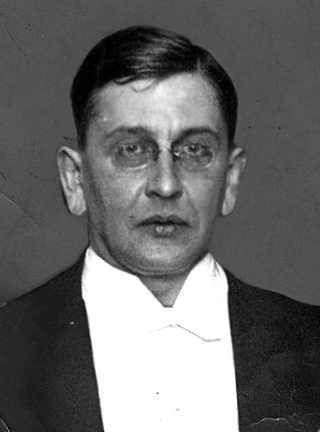
Juliusz Kaden-Bandrowski was a Polish journalist and novelist. Between 1933–1939 he was a secretary general of the prestigious Polish Academy of Literature in the Second Polish Republic.
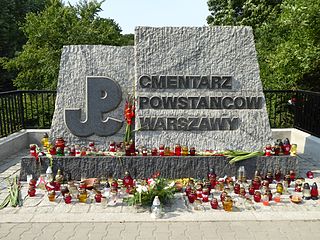
The Warsaw Insurgents Cemetery is located at 174/176 Wolska Street in the Wola district of Warsaw. It was established in 1945 and occupies 1.5 hectares.

Juliusz Bursche was a bishop of the Evangelical-Augsburg Church in Poland. A vocal opponent of Nazi Germany, after the German invasion of Poland in 1939, he was arrested by the Germans, tortured, and sent to Sachsenhausen concentration camp where he died.

The Warsaw Lyceum was a secondary school that existed in Warsaw, under the Kingdom of Prussia and under the Kingdom of Poland, from 1804 to its closing in 1831 by Imperial Russia following the Polish November 1830 Uprising.

Bródno cemetery is an old cemetery in the Targówek district, in the eastern part of Warsaw, Poland. Occupying an area of 114 hectares, it is the largest cemetery in Warsaw. With more than 1.2 million burials, it is one of the largest cemeteries in Europe.
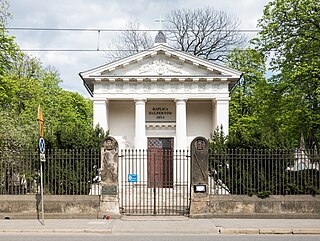
(Polish: Cmentarz ewangelicko-augsburski w Warszawie), The Evangelical Lutheran Cemetery of the Augsburg Confession in Warsaw is a historic Lutheran Protestant cemetery located in the Wola district, western part of Warsaw, Poland.

The Orthodox Cemetery in Warsaw is an historic Eastern Orthodox cemetery located in the Wola district of Warsaw, Poland.

The Warsaw Ghetto boundary markers are memorial plaques and boundary lines that mark the maximum perimeter of the former ghetto established by Nazi Germany in 1940 in occupied Warsaw, Poland.
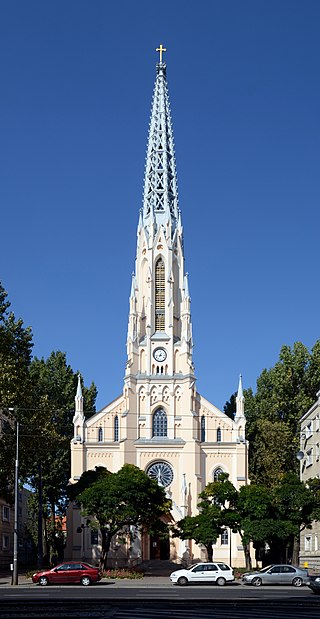
Evangelical Reformed Parish in Warsaw is a Polish Reformed church in Warsaw at Aleja Solidarności 76a.
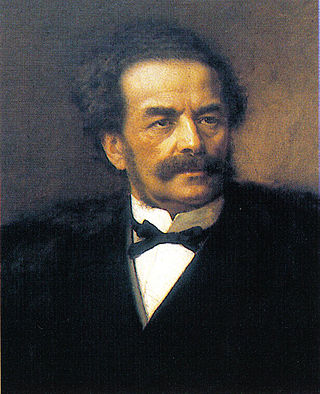
Leopold Stanisław Kronenberg was a Polish banker, investor, and financier, and a leader of the 1863 January uprising against the Russian Empire.

Władysław Edward Kronenberg, Polish engineer, industrialist and composer of Jewish origin.






















